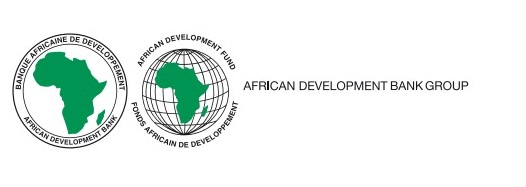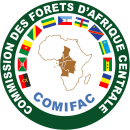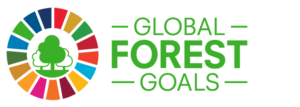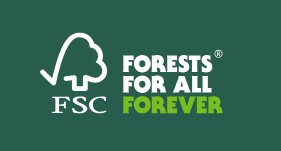
Forestry legislation and policy across Africa and South Africa
To protect the roughly 6.3 million square kilometres of forest in Africa, robust forestry legislation and policy across Africa and South Africa need to be put in place. Inroads are happening globally to better conserve, coordinate and sustain forested areas, from the Democratic Republic of Congo to South Africa and beyond. But this progress isn’t without its share of challenges.
The regulatory environment has had to shift to accommodate unavoidable pressures such as globalisation, climate change, and land reform. But there are more nuanced aspects to consider too, like the impact legislation has on forest-dependent communities and how unregulated domestic trade is brought into the regulatory fold.
Some of the most common hurdles faced when dealing with forestry management in Africa stem from ineffective governance. A list of the top concerns faced in Africa is outlined by the African Natural Resources Centre.
- Poor enforcement of forestry laws and regulations
Implementation of these is unpredictable and often goes unenforced due to corruption.
- Invasive political influence on forestry policy and decision-making
There is often political pressure on key players and a lack of transparency between stakeholders.
- Lack of land-use planning
Land is under pressure from agriculture, mining, and infrastructure development; a lack of timely and robust planning further exacerbates this.
- Lack of coordination between government ministries
Inter-governmental conversation and policy often don’t align and there may be a lack of priority alignment between, for example, the minister of agriculture and the department of forestry.
- A substantial but poorly monitored informal sector
The informal sector’s impact on forestry often outweighs the industrial sector, yet policy isn’t in place from a monitoring and management perspective.
Addressing these areas of weakness requires a coordinated local and global effort. A number of agreements, legislation, resources and memberships have been put in place to help foster more robust forestry guidelines and improve sustainability in Africa.
Here is a summary of forestry legislation and policy across Africa and South Africa:

International Tropical Timber Agreement
Promotes international trade in tropical timber and the sustainable management of tropical forest industries through international consultation cooperation, policy work and project activities.
Find out more: https://www.itto.int/

2013 Southern African Development Community (SADC) Forest Law Enforcement, Governance and Trade plan
Aims to strengthen the implementation of forest law enforcement, governance and trade activities nationally and regionally by raising awareness and resources, as well as by improving coordination and a sense of purpose; is committed to addressing the ‘formalisation’ of informal trade in forest products.
Find out more: https://www.afdb.org

Central African Forests Commission (CAFC)
CAFC is the political and technical body for orientation, coordination and decision-making with respect to the conservation and sustainable management of forest ecosystems in Central Africa.
Find out more: https://comifac.org/en

The Forest Law Enforcement, Governance and Trade Action Plan
Uses the demand for tropical timber products by European markets as leverage to obtain reforms in forestry governance to reduce the consumption of illegally harvested timber in the European Union and around the world.
Find out more: https://flegtvpafacility.org

Extractive Industry Transparency Initiative (EITI)
To promote understanding of natural resource management, strengthen public and corporate governance and accountability, and provide the data to inform policymaking and multi-stakeholder dialogue in the extractive sector.
Find out more: https://eiti.org/
REDD+
Launched after the Conference of the Parties (COP) 2013, REDD+ is an online repository of information highlighting the outcomes of activities from relevant organisations and stakeholders who support capacity building and mobilisation of resources for deforestation prevention.
Find out more: https://redd.unfccc.int/

United Nations Forum on Forests (UNFF)
UNFF is an intergovernmental policy forum promoting the management, conservation and sustainable development of all types of forests across universal members. Wide participation from stakeholders is crucial in ensuring sustainable forest management, coordination and information exchange, and in ensuring the attainment of forest-based economic, social and environmental benefits and overall sustainability.
Find out more: https://www.un.org/esa/forests/index.html

African Natural Resource Centre
Helping African countries maximise development outcomes derived from natural resources through practical knowledge and expertise, advisory services, technical assistance and advocacy for improved and transparent management of renewable and non-renewable resources.
Find out more: https://www.afdb.org/en/topics-and-sectors/initiatives-partnerships/african-natural-resources-centre

Forest Stewardship Council (FSC) Certification
FSC is governed by a global network of over 1 000 individuals and member organisations representing environmental, social, and economic perspectives. FSC’s certification system verifies sustainable sourcing of forest products and ecosystem services at every step of the value chain, from forest to consumer.
Find out more: https://fsc.org/en
There are countless other international regulations that are important when it comes to forestry from an African perspective (and globally too).
- International Union for Conservation of Nature
- Intergovernmental Panel on Forests/ Intergovernmental Forum on Forests Proposals for Action
- United Nation Forum on Forests and the Collaborative Partnership on Forests
- World Bank’s Forest Strategy
There are also general agreements that are not necessarily forestry specific but that govern biological diversity, climate change, cultural and natural heritage, and more.
- Convention on Biological Diversity
- United Nations Framework Convention on Climate Change
- United Nations Convention to Combat Desertification
- Convention on International Trade in Endangered Species of Wild Fauna and Flora
- Convention for the Protection of the World Cultural and Natural Heritage
- Convention on Environmental Impact Assessment in a Transboundary Context
Legislation specific to South Africa has been unpacked below. This is not an exhaustive list but provides an overview of some of the most fundamental legislation.

National Forests Act (No. 84 of 1998)
Outlines the conservation of public forests and their sustainable management on top of general offences, penalties and enforcements; provides guidance on special measures to protect forests and trees; provides regulations on how forests are used and leased, and how community forestry should be handled; outlines the role of the National Forests Advisory Council and the National Forest Recreation and Access Trust1.

National Environmental Management: Biodiversity Act of 2004 (Act No. 10 of 2004)
Provides for the management and conservation of South Africa’s biodiversity within the framework of the National Environmental Management Act, 1998; outlines the protection of species and ecosystems; explains how to handle the fair and equitable sharing of benefits arising from bioprospecting involving indigenous biological resources; indicates the functions of the South African National Biodiversity Institute; gives effect to ratified international agreements relating to biodiversity which are binding on the Republic2.

National Water Act 1998
Provides the legal framework for the effective and sustainable management of our water resources; ensures the nation’s water resources are protected, used, developed, conserved, managed, and controlled in ways that account for (among others) basic human needs, social and economic development, protecting aquatic and associated ecosystems and their biological diversity, and meeting international obligations3.
The control of forestry for its impact on water resources, currently exercised in terms of the Forest Act, is also reflected in the National Water Act.

National Environmental Management Act, 1998
Establishes the principles for decision-making on matters affecting the environment, and the institutions that will promote cooperative governance and procedures for co-ordinating environmental functions exercised by organs of state; provides for certain aspects of the administration and enforcement of other environmental management laws4.
This act introduced the Environmental Impact Assessment (EIA) process as we know it in South Africa.

Environmental Impact Assessment (EIA) Regulations
EIAs are a regulatory instrument used to screen, assess, manage and mitigate the impact of new developments or activities, ensuring they do not result in harmful environmental and ecosystem outcomes or impact health and well-being. Public participation is legislated and plays an important role in decision-making5. EIAs serve to uphold Section 24 of the South African Constitution, summarised as follows: everyone has the right to a healthy environment, and also the right to have the environment protected from pollution and ecological degradation, which promotes conservation and secures ecologically sustainable development6.

National Veld and Forest Fire Act, 1998 (Act No. 101 of 1998)
Regulates the establishment, registration, duties and functioning of fire protection associations; outlines a fire danger rating scale; places a duty on owners to prepare and maintain firebreaks; unpacks offences, penalties and enforcement7.
At Swift Geospatial we provides advanced commercial and natural forestry monitoring and planning tools, such as our Geospatial Forestry Platform, providing clients such as forestry managers and conservationists with up to date, pertinent information and insight to provide decision support to those in need of better information for their legislative compliance.
By using Geographic Information Systems (GIS) in conjunction with high-quality satellite imagery, our tools are able to provide you with:
- Climate change scenarios
- Deforestation monitoring
- Carbon monitoring
- Tree count
- Forest monitoring
To learn more about our forestry monitoring solutions, you are most welcome to click the button below!
